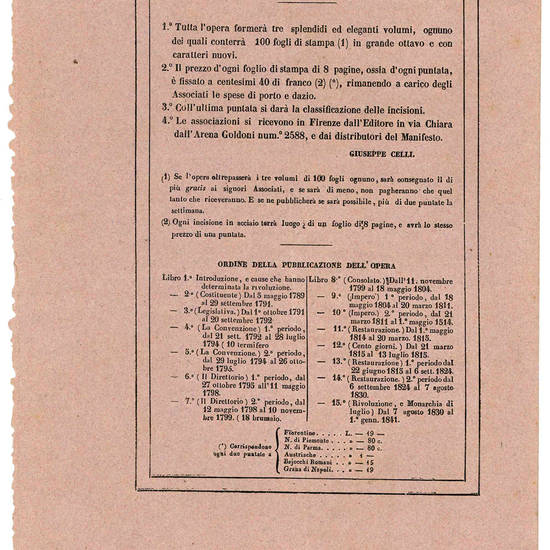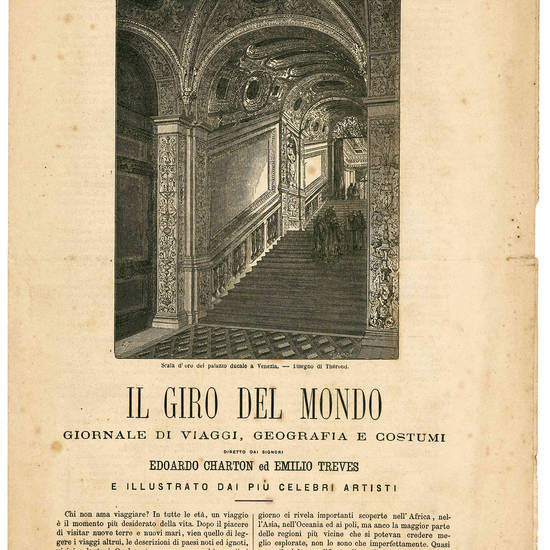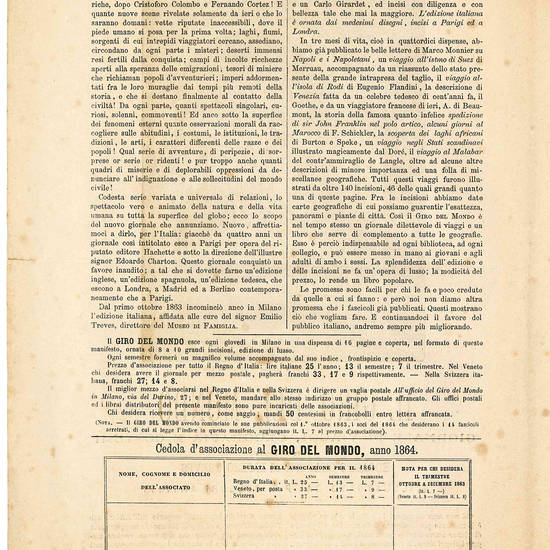-VIVIEN, L. Storia generale della Rivoluzione, dell'Impero, della Restaurazione della Monarchia del 1830 fino al 1841. Firenze, Giuseppe Celli, 1843. Bifolio di mm. 275x193 stampato su carta rosa. Il prospetto contiene uno specimen del frontespizio dell'opera, il numero e il costo delle dispense, nonché le condizioni di sottoscrizione dell'opera composta da tre volumi. Al verso della prima carta un abbozzo manoscritto di lettera non pertinente con il prospetto. Ottima conservazione;
-CHARTON, E. & TREVES, E. Il giro del mondo. Giornale di viaggi, geografia e costumi. Milano, Tip. P. Agnelli, 1863. Bifolio di mm. 315x225. Fioriture, bruniture e mancanze marginali, che tuttavia non comportano perdita di testo. Il prospetto contiene una descrizione dell'opera, uno specimen del testo e delle illustrazioni, una cedola d'associazione, l'elenco delle dispense in uscita nel 1863 e l'elenco dei viaggi che saranno pubblicati nel 1864;
-HÜBNER, Barone di. Passeggiata intorno al mondo… Traduzione italiana di Michele Lessona. Milano, Fratelli Treves, 1877. Bifolio di mm. 395x290. Traccia di piegatura centrale, forte alone al centro, angoli un po' logori. Bel prosetto editoriale di grandi dimensioni contenente specimina del testo e della parte iconografica dell'opera publicizzata, nonché copia della cedola d'associazione.
[5534]










